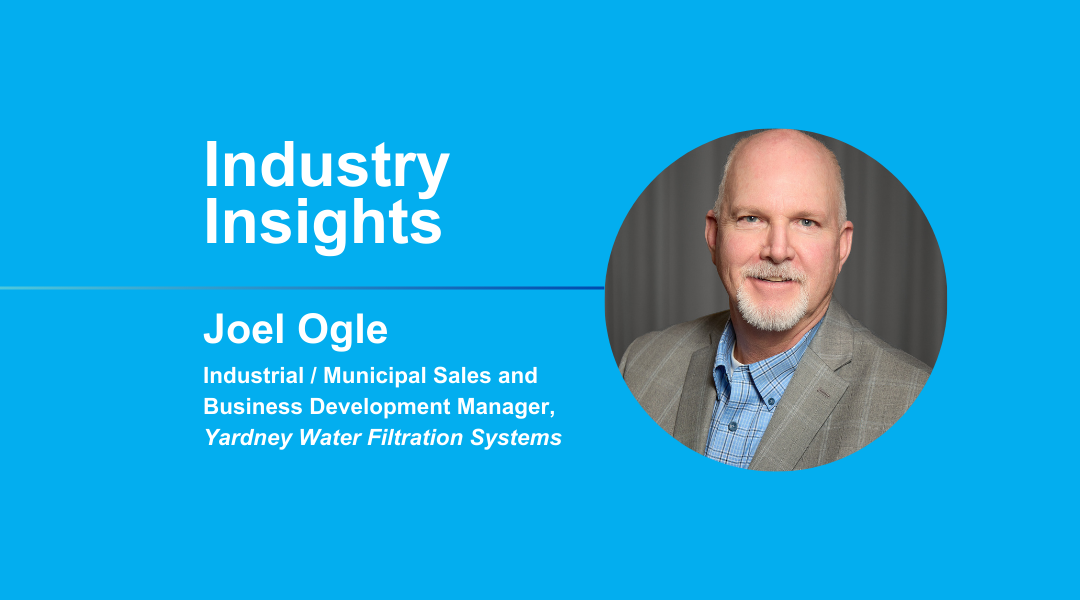With the water and wastewater industry facing mounting challenges, it is clear that traditional methods are no longer sufficient.
To modernize aging infrastructure and reduce risks, municipalities can turn to innovative, long-term solutions.
From using AI-driven tools for predicting failures to selecting advanced materials like Hobas FRPM pipes, these insights from industry expert Joel Ogle provide a roadmap for cities looking to enhance asset management and ensure sustainable project success.
Introducing Joel Ogle
With over 20 years of experience in the water and wastewater industry, Joel Ogle has built an impressive career spanning various aspects of pipeline and plant rehabilitation, water storage, and coating inspections. Based primarily in the Midwest and West Coast regions, Joel’s expertise includes working with both steel and concrete substrates. He is a NACE (now AAMP) certified coatings inspector, a certified PACP, MACP, and LACP inspector under NaSCo, and a competent site project manager. Joel also serves as the Director for the Missouri section of the American Water Works Association (AWWA) and is actively involved in asset management on a national scale. His participation extends to several water and environmental committees, including outreach coordination for the Water Environment Federation.
Key Challenges in the Water Industry
One of the primary challenges Joel sees in the water industry today revolves around setting appropriate expectations for customers, particularly when it comes to transitioning between wastewater and water conveyance projects. While wastewater systems are typically based on gravity flow, water conveyance relies on pressurized pipes, creating different sets of risks and challenges.
For instance, wastewater systems primarily face issues related to trench settling or soil conditions during construction. However, in pressurized water systems, even minimal settling can cause significant problems, such as leaks, sinkholes, and surface damage to infrastructure like roads and sidewalks. Joel frequently witnesses such failures, particularly in older cast iron or ductile iron pipes, which often result in substantial damage to communities and surrounding structures.
Recommendations for Municipalities
Joel advocates for municipalities to explore all available products and technologies in the industry.
He often encounters a common mindset of “we’ve always done it this way,” which, in his experience, only leads to recurring issues. Rather than continually applying short-term fixes, municipalities should evaluate newer technologies that could provide more effective long-term solutions. This includes innovations in both pipe materials and plant processes.
Embracing Innovation and Technology
The water and wastewater industry are historically conservative, but Joel stresses the importance of embracing innovation. New technologies, particularly in the realm of software and artificial intelligence, are emerging to help municipalities better predict potential failures. By using AI-driven tools that analyze historical data, cities can implement inspection programs that predict where and when failures are most likely to occur, whether in pressure or gravity pipe systems. These advancements are changing the way the industry approaches asset management and risk mitigation.
The Benefits of Hobas Pipe
Throughout his career, Joel has worked with Hobas Pipe, particularly in jack and bore applications where pipes are installed beneath bridges, roads, or long-distance tunnels. He highlights the advantage of Hobas Pipe in these situations due to its smaller segments, which allow for easier installation in confined spaces. This reduces the project’s footprint and minimizes disruptions to surrounding areas, such as residential or industrial zones.
Joel also notes that while some municipalities are hesitant to switch from traditional materials like ductile or cast iron, new materials like Hobas Pipe offer long-term benefits. Factors such as soil conditions and potential contaminants like hydrocarbons must be carefully considered when selecting the right pipe material. In many cases, Hobas Pipe is less susceptible to corrosion and degradation, making it a more suitable choice for certain environments.
The Importance of Inspection and Oversight
Joel is a strong advocate for the role of inspectors in ensuring the success of water infrastructure projects. He frequently hears from municipalities that they cannot afford to have an inspector on-site full-time, but he argues that they cannot afford not to. Without proper oversight, contractors may unintentionally cut corners, leading to costly mistakes that could have been prevented.
One specific example Joel shares is the installation of tracer wires on non-metallic pipes like PVC or HDPE. Without an inspector present, critical components like these may be overlooked, making it impossible to locate the pipe in the future. He emphasizes that having a dedicated inspector is crucial for ensuring compliance with project specifications and mitigating risks.
Collaborative Approaches and Best Practices
In Joel’s experience, the best outcomes are achieved when municipalities, engineering firms, contractors, and other stakeholders work collaboratively from the outset of a project. By embracing innovation and maintaining open communication, all parties can reduce costs, avoid missteps, and ensure a more successful project.
He also encourages municipalities to adopt a mindset of continuous improvement. While traditional methods may have worked in the past, Joel believes that evaluating new technologies and tracking failures can help guide better decision-making and lead to more sustainable infrastructure solutions in the future.
The AWWA Innovation & MAC educational initiative
The AWWA Innovation & MAC educational initiative refers to a program within the American Water Works Association (AWWA) focused on transforming the way municipal procurement is handled. It seeks to shift the traditional practice of awarding contracts based on the lowest initial capital expenditure (CapEx) toward a model that emphasizes the lowest life cycle cost.
This approach is designed to result in more sustainable solutions, ensuring that long-term operational and maintenance costs are considered in decision-making, rather than just upfront expenses. The initiative aims to promote more innovative and cost-effective solutions for municipal projects by considering the total cost of ownership over time.
Closing Thoughts
As the water and wastewater sectors continue to face mounting challenges, professionals like Joel Ogle offer essential guidance for navigating this complex landscape. By embracing innovation, fostering collaboration, and maintaining a focus on long-term solutions, municipalities can effectively address the growing demands of modern infrastructure. Joel’s career is a testament to the importance of expertise, oversight, and continuous improvement, setting a strong example for industry leaders seeking sustainable and forward-thinking outcomes.
Book A Lunch-n-Learn
If you want to follow up with us before or after the conference, book a Lunch-n-Learn or inquire about scheduling a tour at our facilities here.


